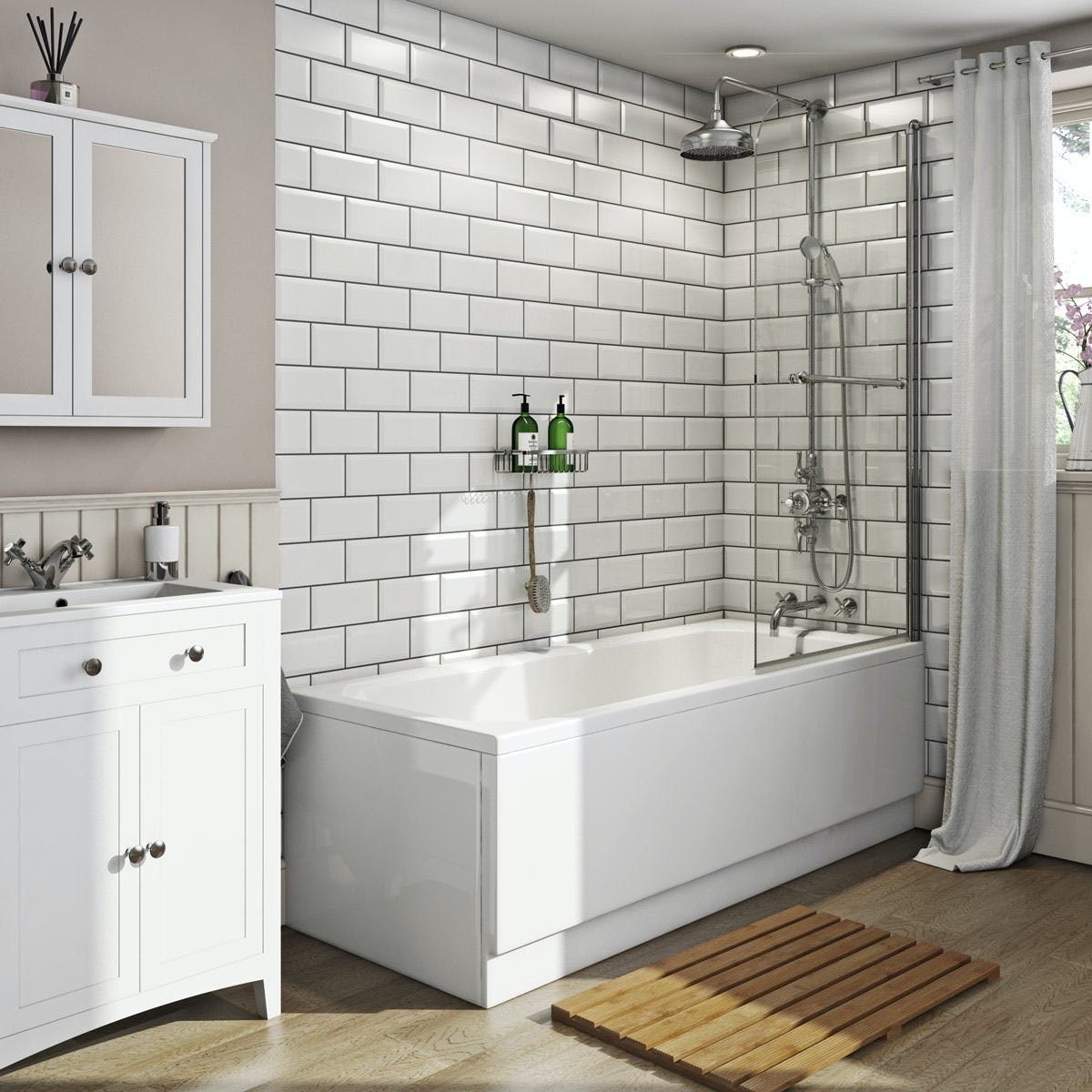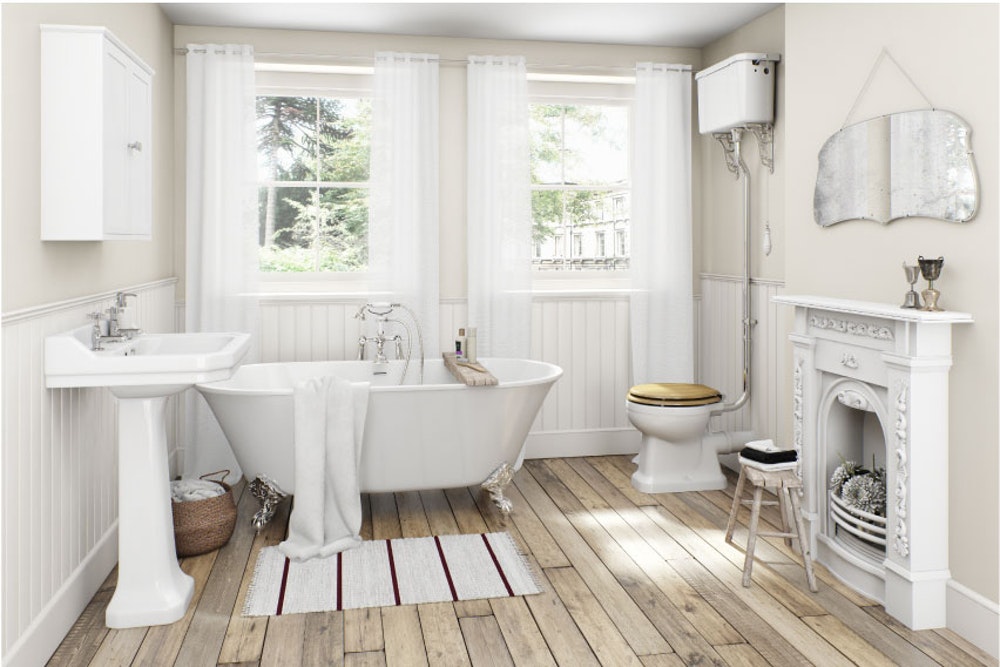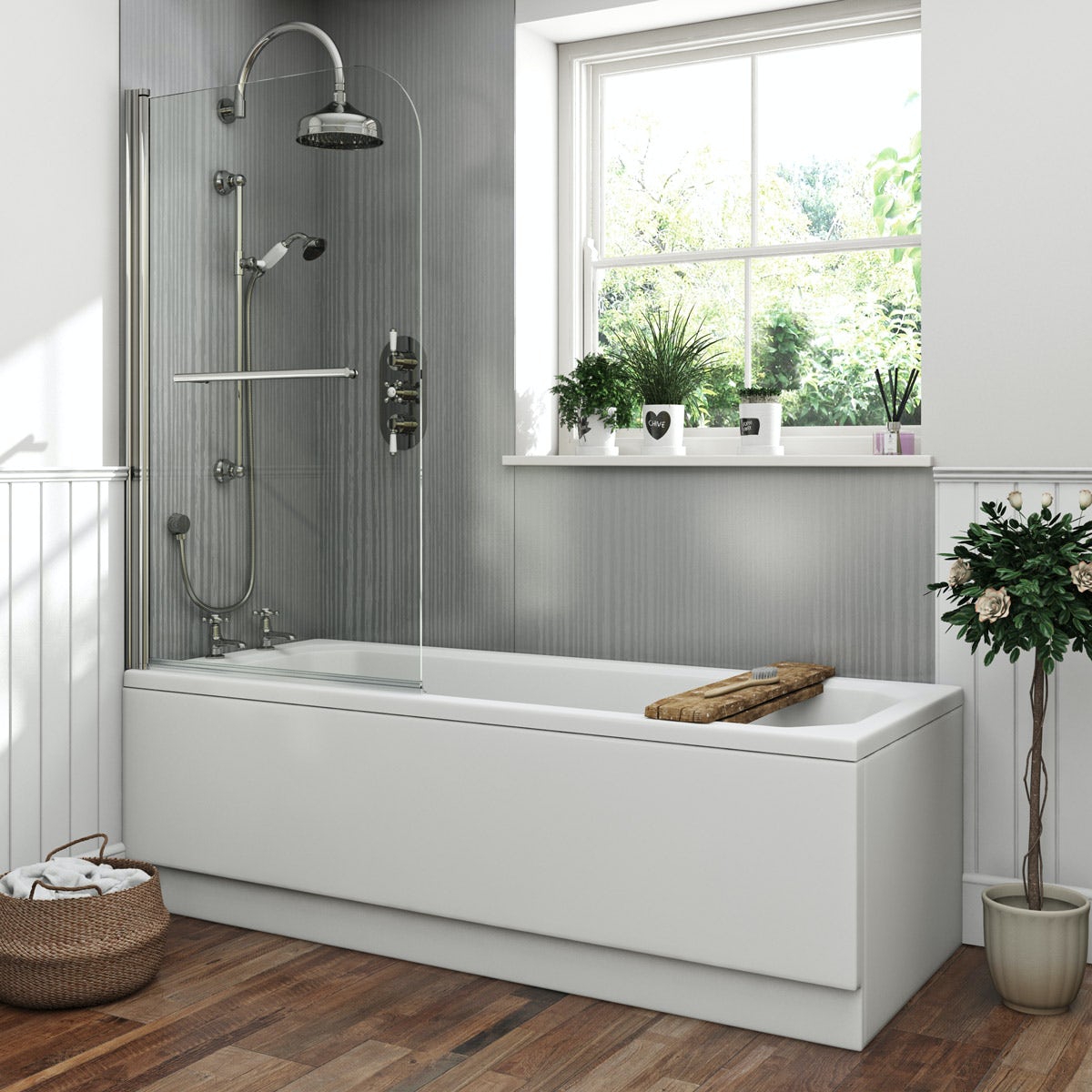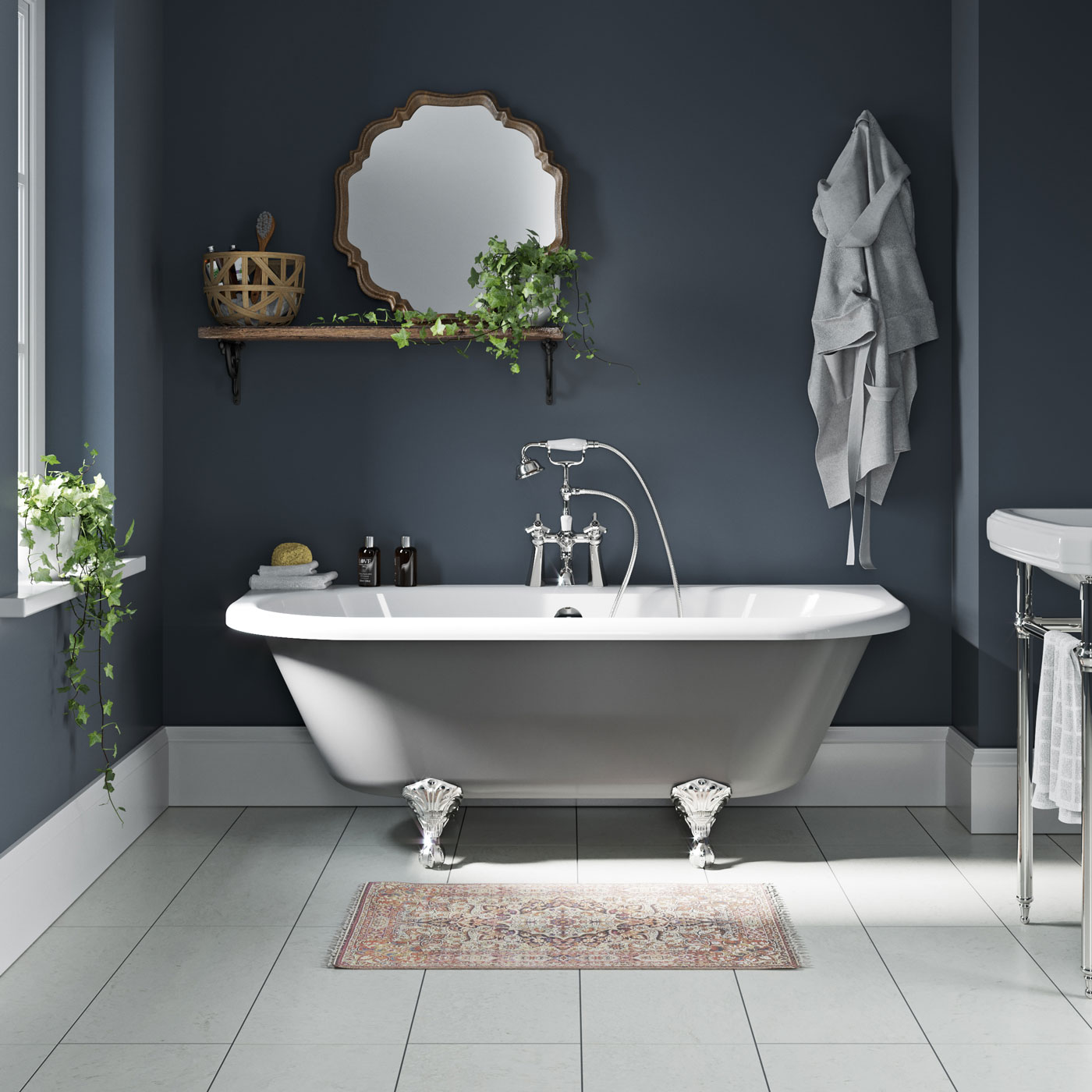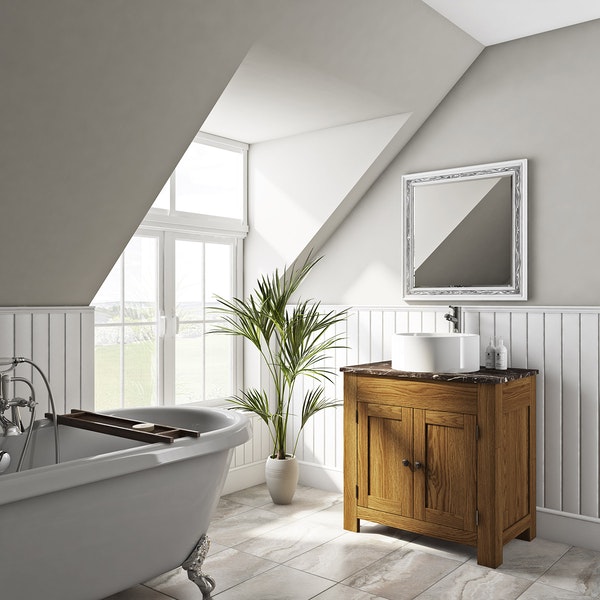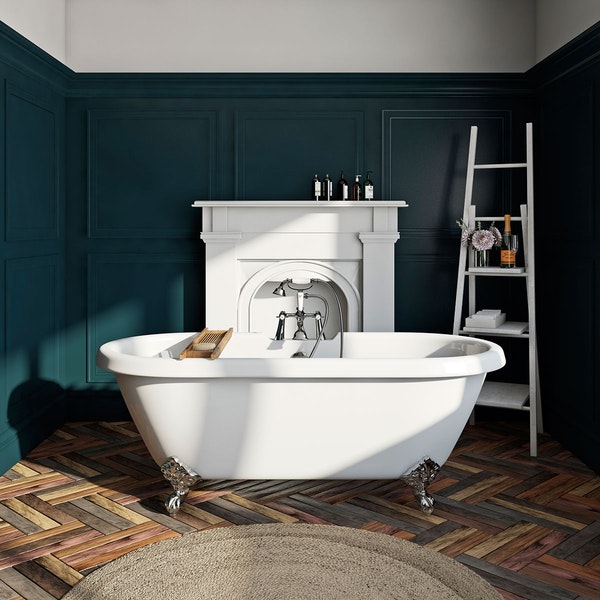So you want a new bathtub in your bathroom but don’t know where to start? Don’t worry; it doesn’t have to be difficult. We’ve got you covered with our nifty DIY Guide: How to Install a Bathtub in 5 Easy Steps. In this blog, we’ll give you tips and tricks for installing a bathtub for a low effort, low cost, and stress-free job that you’ll be proud of when it’s all said and done. So cut the fluff and let’s dive right in!
Quick Recap
Installing a bathtub requires some plumbing knowledge and the right tools. If you are unsure how to do it, it is best to call in a licensed plumber for assistance.
Preparing for the Bath Installation
Preparing for the bathtub installation requires careful planning and consideration to ensure a successful installation. Before beginning, homeowners must review the space in which they are installing their bathtub. If there is existing plumbing fixtures and pipe-work it should be examined to make sure it’s in good condition, as well as compatible with the new fixture and materials needed. If replacing an existing tub, the old tub will need to be removed. This can be done by first turning off the water supply and disconnecting the drain pipes before carefully lifting the tub out of its space with at least two people.
If installing a new fixture, there may be additional steps that require homeowners to take into account such as determining optimal size and placement of pipes that require cutting into walls or substrates. Homeowners should also determine which type of material they would like their bathtub to be made of, such as steel, acrylic, cast iron or fiberglass. Each material has its own set of pros and cons – from cost to installation process – so homeowners must select the one that best fits their needs and budget.
With proper preparation beforehand, homeowners can now move onto measuring their space and materials for bathtub installation. In the next section we will discuss the actions needed to make these measurements accurately so that you can install your new bathtub safely and effectively.
Measuring the Space and Materials
When it comes to installing a bathtub, measuring the space and gathering the necessary materials is one of the most important steps. Taking measurements will inform you how much material is needed, where to place the tub, and what appliances are compatible with your space.
To start, measure the length and width of the walls where you plan to install the bathtub. It’s typically recommended to leave at least 3/4 inch on every side. Additionally, make sure that your electrical outlets are properly positioned where they should be in relation to the final positioning of the tub. Having accurate dimensions ahead of time will help when selecting bathroom fixtures such as tiles and frames.
Additionally, determine what type of bathtub best fits your individual needs and preference. There often several options to choose from including alcove or corner tubs, drop-ins or stand-alones, garden tubs and more. Once you select a model, make sure you have all of the necessary components such as faucet hardware and pipes for installation. It’s important to also purchase a tub drain kit with screws and washers for a secure installation. Having all the materials in hand prior to beginning the project is invaluable for ensuring a successful installation experience from beginning to end.
Now that all the measurements are taken and materials are gathered, it’s time to move onto Step 4: Installing The Tubs.
Installing the Tubs
Installing a bathtub can be a daunting task, but not one that’s impossible to master. Let’s break the process down into five easy steps!
First, figure out where you want to place your tub, and get ready to start drilling holes in the wall to put in the brackets. If you’ll be using an existing hole, make sure that it is clear of debris before proceeding. Be sure to use a level and mark your measurements with a pencil ahead of time, so you know where the brackets will go and how deep they should be drilled. If you plan on having additional fixtures such as faucets installed outside of the tub, make sure to create enough space for them as well.
Second, cut out any areas of drywall or plaster that may interfere with your brackets and scribe out areas for any pipes or electrical wiring you plan on having installed later. Securely attach your mounting brackets to the wall – experts recommend using toggle bolts for extra strength – then move on to installing the overflow drainpipe. Depending on your bathtub’s design this could involve either sweat-soldering or using compression fittings.
Third, install the supply lines according to manufacturer instructions. You’ll likely need a wrench or special tools depending on your setup; if you don’t have those tools yourself, contacting a professional may save you from having to buy them.
Fourth, fit your tub into place – if it doesn’t fit properly after all these steps are done something might have gone wrong; check with an expert if that happens – and perform final fitting adjustments as needed. Make sure there is adequate clearance between the walls and edges of your bathtub – up to 3/4 inches is ideal – otherwise water could build up and cause damage both inside and outside of your house.
Finally, use sealant around your drain fittings and tub edges, once they have been put in place. This helps form a water-tight seal that prevents water from seeping behind walls or forming pools between tiles which can eventually cause mildew or mold. When applying sealant work in strips along seams instead of one large glob so as not to leave behind excess stains or bumps.
Taking all these precautions beforehand makes installing the tub easier and minimizes potential risks down the line. Safety considerations should also be taken into account when installing a bathtub; stay tuned for more information about safety considerations in our next section!
Safety Considerations
Safety Considerations should never be overlooked during any DIY home improvement project, particularly one that requires attention to water fixtures like the installation of a bathtub. It is important to work with an understanding and respect for the danger of both electricity and water that can cause serious injury or death if not treated with care.
First, water needs to be shut off to the entire house in order to install a new bathtub. When the pipes are exposed and ready for connection, it is best to hire a licensed plumber to connect or disconnect all plumbing lines. Without professional guidance, there is a risk of leaks or other problems that can occur from improperly connected pipes, resulting in water damage and costly repairs.
Second, if the bathtub being installed nears an electrical junction box – like a light fixture or switch – then safety measures must be taken and additional parts may need to be purchased. A qualified electrician should always verify that no wiring is exposed before proceeding with installation. Additionally, GFI (ground fault circuit interrupter) outlets should be added next to any electrical outlets found near the bathtub which will provide extra protection and peace of mind while bathing.
In conclusion, proper safety measures must always be considered when installing a bathtub. Manpower alone is not enough to ensure safe installation; enlisting the help of professionals should guarantee peace of mind as well as a properly functioning system in the end. With this in mind, we’re ready to move onto connecting the pipes with our newly installed bathtub – let’s get started!
Connecting the Pipes
Connecting the Pipes is an important part of installing a bathtub. It is important to make sure that all pipes are connected properly and leak-free, as this can cause major problems down the line.
There are two options when it comes to connecting the pipes. The first option is to install a supply line kit. This is a pre-assembled kit which includes all necessary fittings and valves, such as shut-off valves and drain connections, needed to connect the tub to the existing water lines in your home. The advantage of using this kit is that it takes a lot less time and effort, as you don’t have to manually try and match up the existing water lines with what your new bathtub requires.
The second option for connecting pipes is to use individual fittings and valves. This will require more attention to detail as you need to pay particular attention to make sure that everything matches up. You also need to ensure you have all the parts needed – like shut-off valves, drain connections and flexible supply lines – which may require additional purchases at a plumbing store before you can start connecting everything up. The advantages of this route are that you have better control over each fitting and more flexibility when it comes to installation.
No matter which route you decide to take when it comes to connecting the pipes, proper preparation is key in ensuring a successful installation. Make sure that all of your pipe fittings are secure and sealed properly – any air or water leaks can cause major damage to your new bathtub or other fixtures in your home, potentially even leading to costly repairs or replacements.
Now that your pipes are connected, it’s time to move onto the next step: connecting the tap and fixtures.
Main Summary Points
Installing a bathtub requires connecting pipes and there are two options for doing so: using a supply line kit or achieving it using individual fittings and valves. It is important to ensure all pipes are properly connected, sealed, and air-tight to avoid potential damage or costly repairs. Once the pipes are connected, the next step is connecting the tap and fixtures.
Connecting the Tap and Fixtures
With the bathtub successfully installed and the necessary plumbing connected, it’s now time to connect the tap and fixtures. If you haven’t already done so, purchase the tub faucet of your choice and make sure you have the necessary tools available to do the job correctly.
First, make sure the water supply is turned off in order to avoid any potential risk of flooding or leaking. It’s also important to pull out the drain plug before connecting any pipe work. Connect one end of the flexible pipe to the hot water valve and one end to the cold water valve. Be sure that you wrap Teflon tape around each connection point before tightening it securely with a wrench.
It is recommended that professionals tie each connection off with a single hook joint under the basin to ensure there are no potential issues during use. Some DIYers debate that this isn’t completely necessary but if installed correctly, hooking one or two connections should hold up over time without causing noticeable damage or leakage. Use an adjustable spanner or socket wrench while being careful not to over tighten and create stress on the connections which could cause weak spots that leak.
When all of these fittings are complete, take some extra precautionary measures by using plumber’s putty on all exposed drain edges that directly contact your new bathtub before securing them with screws using an electric drill. This will help to prevent seepage or corrosion over time without inhibiting the drain’s natural flow capacity.
Now that your bathtub is fully connected to its own plumbing system with all fixtures securely in place, it’s time to finish up and ensure a safe installation for years of enjoyable use – our next step is finishing up with a few final steps for a successful setup.
Finishing the Installation
Before making any final adjustments and putting away your tools, make sure the finished product looks good. Take the time to look at the bathtub from multiple angles and check for any issues. It’s important to catch any flaws early on since it will be a lot more difficult to make repairs after everything is complete.
In some cases, where the bathtub is going in a corner, caulk may be necessary to seal off any potential water leaks from occurring. If this is the case, apply quality 100% silicone caulk designed to adhere in wet areas across the seams between the tub and tile or walls. Be sure to read the label first, as some reports suggest some brands can affect stains or not dry properly.
For an added layer of protection and to create a more aesthetically pleasing finish, choose from a variety of sealers such as epoxies, urethanes, or even protective coating compounds specifically tailored for these types of projects. Whether you opt for one of these seven available options should depend on your budget, skill level, and desired appearance.
Now that the installation is finished and it’s looking great inside its new home, it’s time to set up all additional fixtures like faucets taps and shower heads so they are securely in place when it comes time to fill up the tub. With that done let’s move on to our next section about adhesive, countertop, and floor setup.
Adhesive, Countertop, and Floor Setup
Before you install your new tub, it is important to set up the adhesive, countertop, and floor for the best installation results. Selecting the right supplies for your job goes a long way when it comes to achieving durable and professional results.
Adhesive:
For successful adhesion, an appropriate adhesive should be used for the surface of the tub. Many are available in tubeless adhesive kits specifically for tub installation. Adhesives that provide a waterproof bond between the wall and the tub must be used in high-moisture areas like bathtubs or showers. Your adhesive should also be strong enough to hold the weight of your bathtub as well as any fixtures you may choose to include later on. For added strength, some recommend using an acrylic caulk joint instead of a drywall joint compound.
Countertop:
The countertop is another important factor when installing a new bathtub. A good quality laminate or solid-surface counter will help prevent water damage and mold growth over time. An undermount sink can also be installed at this time if desired. Whichever type of countertop you choose, make sure it is structurally sound and free from defects that could cause water leaks in the future.
Floor Setup:
Finally, ensure that the floor has adequate support before setting up your new bathtub. It’s recommended to use rigid foam subfloor panels or Durock cement board for stronger support in higher-traffic areas such as bathrooms with tiled walls or wet room floors. Additionally, choose a material with a moisture-resistant rating sufficient for its intended purpose–floors should be sealed properly prior to installation of the tub–and check for levelness prior to installation.
Conclusion:
Now we have gained an understanding of how to properly prepare our adhesive, countertop, and floor setup in order to achieve optimal results when installing our new bathtub. In the next section, we will discuss our conclusion on this DIY guide and go over ways to troubleshoot any further installation issues that may arise during the process.
Conclusion
Installing a bathtub in your home is a great way to improve its overall look and value. It can add a luxurious feel to your bathroom, plus it can be a great conversation starter when guests enter the room. As long as you take the time to plan out every step and measure twice, you can install a bathtub in five easy steps.
When evaluating the pros and cons of DIY installation versus hiring a professional, it ultimately comes down to budget and confidence. Most people agree that there are certain jobs that should always be left to the professionals, while others may feel more capable of doing them themselves. For those on a budget, DIY installation might just make sense. However, it’s important to weigh up potential risks and ensure you have the right materials and tools for the job as well as access to ample information and support should you need it.
Overall, if you’re willing to research and prepare adequately, then DIY installation is definitely an option worth considering. With this guide by your side, this project has been made incredibly simple, fast and cost-effective!
Frequently Asked Questions and Responses
How long does it typically take to install a bathtub?
It typically takes a full day to install a bathtub, depending on how prepared and organized you are. You need to make sure that the space is properly measured, the materials and tools are gathered, electricity is shut off or connected as needed, and that there’s adequate clearance for the installation. Installing a bathtub also involves connecting drains and overflows, managing wet spaces effectively, and making sure that the structures around it are stable. When these steps are taken into consideration, then an experienced installer can install a bathtub in approximately 8-10 hours.
Is professional installation recommended for a bathtub?
Professional installation of a bathtub is highly recommended for a few reasons. First, properly installing a bathtub requires knowledge of plumbing, fixtures, and general construction that most DIYers do not possess. That means the job is likely to take longer and potentially cause more damage with mistakes.
Second, proper installation includes using supplies and materials that may be difficult or even impossible for the average person to acquire. This includes things like professional grade silicones, sealers, and other tools that create a water tight seal between your tub and the wall surface.
Finally, many local building codes require professional installation of plumbing components such as bathtubs in order to ensure safety and adherence to regulations. If a DIY job does not meet these standards, it could be subject to inspection failure and costly fines to correct the problem.
In summary, the time investment plus potential harm from mistakes or non-adherence to building code usually make it worth seeking out professional installation for your new bathtub.
What are the necessary tools and materials for the installation of a bathtub?
The necessary tools and materials for the installation of a bathtub include a utility knife, hammer, power drill and driver bits, adjustable wrench, saw with appropriate blades, pliers, level, caulking gun and tub sealant, caulk and screws. Depending on the material of your existing tub, you might also need tile adhesive or mortar.
A utility knife is used to remove old caulk or sealant from around your current tub and to apply new caulk. A hammer is needed to tap in any nails or screws that may be protruding from the wall. A power drill and driver bits are essential for drilling holes into your walls for attaching mounting plates for your new tub. An adjustable wrench is needed to install any nuts onto bolts or screws. You may also need a saw with appropriate blades if you need to make cuts for pipes or fixtures. Pliers are also important if you are dealing with pipe fittings or tightening down nuts or clamps. Finally, you need a level to ensure that your bathtub will be level when installed.
In addition to these tools you will also need some building materials including caulk and screws as well as tub sealant specific to the material of your tub. If installing onto tiles, you will also need tile adhesive or mortar.

